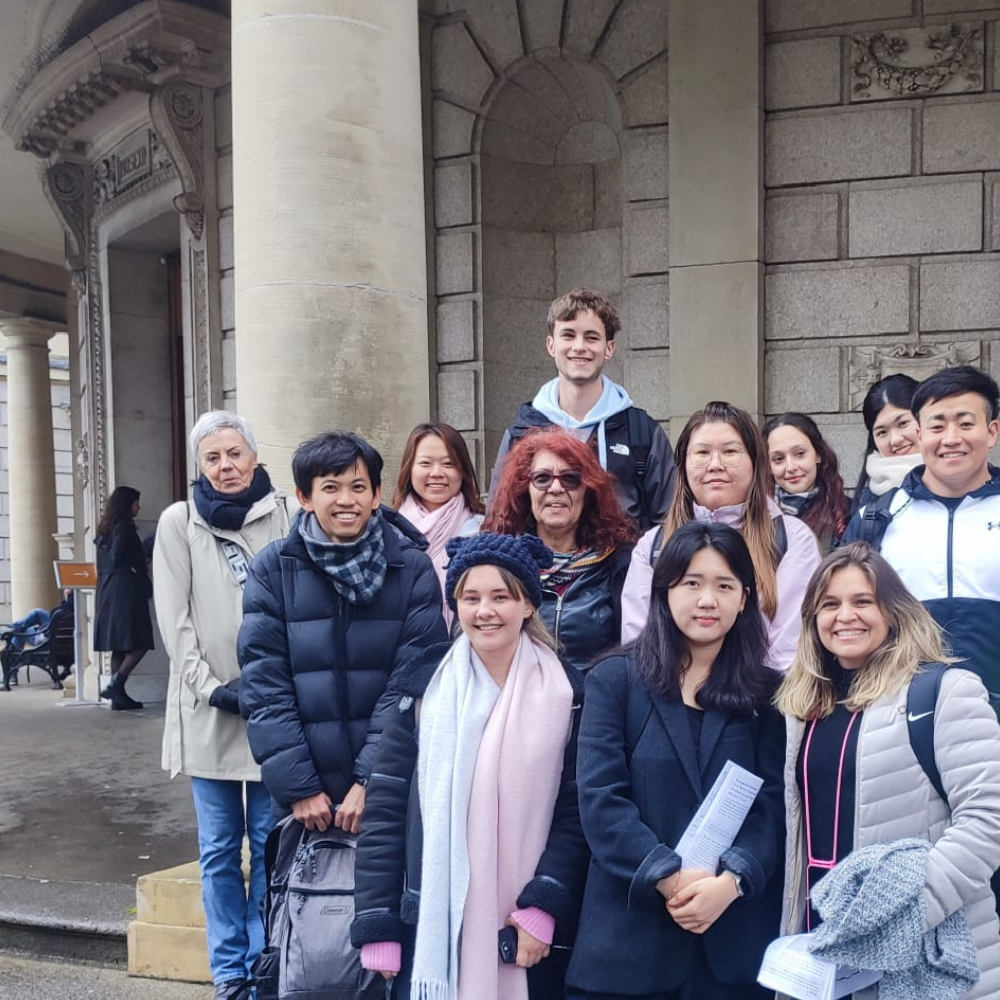- Why Inclusion and Diversity Matter in Education Today
- The Link Between Erasmus+ and Inclusion: Building a More Equitable Europe
- 1. Create an Inclusive Classroom Culture
- 2. Differentiate Instruction for Diverse Learning Needs
- 3. Encourage Open Dialogue and Critical Thinking About Diversity
- 4. Integrate Culturally Responsive Teaching
- 5. Partner with Families and the Wider Community
- The Lasting Impact of Inclusive Classrooms
5 Powerful Ways to Foster Inclusion and Diversity in Your Classroom
Creating an inclusive and diverse classroom isn’t just a goal; it’s a necessity in today’s multicultural learning environments. When students feel seen, heard, and valued for who they are, they’re more likely to thrive academically, socially, and emotionally. Whether you teach in a multilingual setting or want to promote equity in your lessons, these five practical strategies will help you build a more welcoming and empowering space for all learners.
Why Inclusion and Diversity Matter in Education Today

In an increasingly interconnected and multicultural world, fostering inclusion and diversity in the classroom is more important than ever. Today’s classrooms across Europe reflect a rich mix of cultures, languages, abilities, and life experiences. When teachers actively cultivate inclusive environments, they help every student feel valued, safe, and empowered to participate fully.
Inclusive teaching isn’t just a moral imperative as it directly impacts learning outcomes. Research shows that students who feel accepted and included are more engaged, have better attendance in school or university, and perform more strongly academically. They also develop key social-emotional skills, such as empathy and cooperation, that prepare them for diverse workplaces and societies.
At a broader level, inclusive classrooms help combat prejudice and stereotypes, promoting social cohesion and tolerance. By embracing diversity, educators can contribute to a more peaceful, understanding, and equitable society, one classroom at a time.
The Link Between Erasmus+ and Inclusion: Building a More Equitable Europe

Inclusion is not just a buzzword in Erasmus+, it’s a core value embedded throughout the programme’s mission. The European Union recognises that social inequality, discrimination, and educational disadvantage remain barriers for many learners, and it has made inclusion a priority area in the current Erasmus+ cycle (2021–2027).
Erasmus+ specifically aims to ensure that people of all backgrounds – regardless of ethnicity, ability, gender, socio-economic status, or geographic location – have equal access to high-quality education and mobility opportunities. This means that projects, courses, and exchanges are encouraged (and often required) to include measures for widening participation and removing barriers for under-represented groups.
For educators, this commitment to inclusion translates into:
- Funding opportunities to support diverse learners: Erasmus+ offers additional financial support for participants with fewer opportunities, including those with disabilities or from remote or disadvantaged communities.
- Training in inclusive practices: Many Erasmus+ CPD courses, like those offered at our accredited centres in Ireland, focus on equipping teachers with strategies to adapt materials, foster welcoming environments and address bias in the classroom.
- Cross-cultural exchanges: By bringing together educators and students from across Europe, Erasmus+ helps build mutual respect, challenge stereotypes, and foster intercultural understanding which area all essential for teaching in today’s diverse societies.
When educators prioritise inclusion in their teaching, they’re not just enriching their own classrooms, they’re contributing to a broader European vision of equity, solidarity, and shared prosperity.
You can learn more about Inclusion and Diversity as an Erasmus+ priority on the link below:
1. Create an Inclusive Classroom Culture
How to Set the Tone for Belonging
An inclusive classroom culture is the foundation of every successful effort to promote diversity. Without a safe, welcoming environment, students are less likely to engage, take risks, or feel a sense of ownership over their learning. Building this kind of culture takes intentional effort from day one and it starts with the teacher modelling inclusivity in both words and actions.

- Establish clear ground rules: Co-create classroom rules with students to ensure buy-in. Frame them positively (e.g., “Respect everyone’s ideas”) instead of using prohibitive language.
- Use inclusive language: Avoid assumptions about family structures, gender identities, or abilities. Replace phrases like “mum and dad” with “parents or caregivers” and “boys and girls” with “students” or “everyone.”
- Celebrate diversity visibly: Display multicultural artwork, posters, or quotes from leaders of different backgrounds. Use teaching resources and examples that reflect a range of cultures, abilities, and experiences so students can see themselves and others positively represented.
- Recognize and challenge bias: Acknowledge when stereotypes appear in materials or discussions and use these moments as opportunities to teach critical thinking.
2. Differentiate Instruction for Diverse Learning Needs
Meeting Students Where They Are
Every classroom includes learners with varied strengths, needs, and interests. Differentiated instruction recognizes these differences and provides multiple pathways to understanding, allowing each student to thrive. It empowers educators to challenge high achievers while assisting those who need more support.

- Vary content delivery: Present key ideas using videos, infographics, lectures, reading materials, and hands-on activities so that students with different learning styles can grasp concepts.
- Adapt classroom assessments: Give options for students to explain what they’ve learned through oral presentations, visual projects, or traditional written tests based on their strengths.
- Provide targeted support: Use formative assessments to identify gaps early and offer additional guidance or small-group instruction to those who need it.
3. Encourage Open Dialogue and Critical Thinking About Diversity
Building Awareness and Empathy
Conversations about identity, culture, and equity can be uncomfortable, but they are essential for preparing students to thrive in a diverse world. Creating space for open dialogue helps break down barriers and builds empathy – skills that are vital not only in school, but in every aspect of life.
- Use structured dialogue strategies: Organize “Socratic Seminars” or circle discussions where everyone gets a turn to speak, ensuring quieter voices are heard and respected.
- Ask open-ended questions: Avoid yes/no questions; instead, use prompts like “Why do you think…?” or “How would you feel if…?” to deepen reflection.
- Establish norms for discussion: Agree on guidelines such as listening without interrupting, disagreeing respectfully and keeping an open mind.
4. Integrate Culturally Responsive Teaching
Reflecting Students’ Backgrounds in Your Curriculum
Culturally responsive teaching acknowledges students’ heritage, languages, traditions and lived experiences as valuable assets in the classroom. By weaving these elements into lessons, educators foster belonging, motivation and richer peer understanding.
- Include multiple perspectives: Choose literature and informational texts that represent a wide range of voices, not just dominant cultures.
- Learn about your students’ cultures: Build relationships with students and families, ask questions and show genuine interest in their backgrounds.
5. Partner with Families and the Wider Community
Creating a Holistic Support System
True inclusion doesn’t end at the school gates. When families and communities are actively involved in education, students feel a greater sense of connection and support, leading to improved outcomes both academically and socially. Educators who collaborate with families also gain valuable insights into students’ needs and strengths.
- Invite community participation: Arrange for local artists, business owners, or cultural representatives to speak to the class or host workshops that broaden students’ horizons.
The Lasting Impact of Inclusive Classrooms
Inclusive and diverse classrooms don’t just benefit individual students; they strengthen society as a whole. By teaching acceptance and understanding, educators help reduce prejudice and build the foundations of a more tolerant and peaceful world. When learners feel seen and supported, they develop the confidence to contribute positively to their communities and the global society.
For Erasmus+ educators, fostering inclusion aligns with the European Union’s commitment to social equity and intercultural understanding. By prioritising inclusion in your teaching practice, you’re not only meeting Erasmus+ objectives, but also investing in a brighter, fairer future!
Read our blog on Improving Mental Health and Well-Being in Schools
